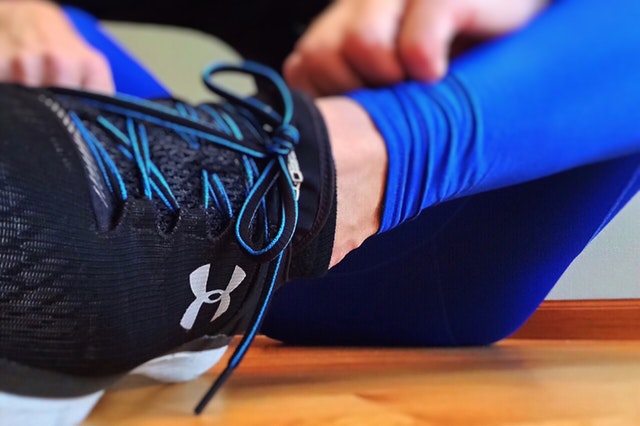Deep vein thrombosis or DVT is a relatively common condition that affects as many as 600,000 new adult men and women in the U.S. every year. Because the condition often develops without any noticeable symptoms, you can have DVT for some time before you realize it. Unfortunately, that can leave you at risk for the condition worsening and even becoming life-threatening for some sufferers. Since March is DVT Awareness month, the staff at Incredible Veins Skin & Body have some tips to help you understand DVT and the steps you can take to lower your risk for this vein condition.
Understanding DVT
DVT is a condition that occurs when a blood clot forms in a deeper vein of the body, usually one located in the lower leg. In addition to causing damage to the vessel in which it forms, DVT can lead to a life-threatening condition known as pulmonary embolism. This is why DVT is such a major concern for travelers that will spend many sedentary hours in a plane, train or car, increasing the risk that a blood clot could develop.
While DVT is not always symptomatic, there are patients that develop pain or swelling in the leg around the affected vein. Symptoms in just one leg are particularly concerning. If you develop the symptoms of DVT, it is important to seek medical care as soon as possible so that your condition can be properly diagnosed and treated before complications arise.
Complications of DVT
The most serious complication of DVT is a pulmonary embolism. This occurs when the clot or a portion of the clot breaks free from the location where it formed. The clot can then travel through the bloodstream to the lungs, where it can lead to the pulmonary embolism. Pulmonary embolism is a potentially life-threatening condition characterized by the following symptoms:
• Acute chest pain
• Difficulty breathing
• Lightheadedness or fainting
• Coughing up blood
A pulmonary embolism requires emergency medical attention. The CDC estimates that 60,000-100,000 people in the U.S. die of DVT and pulmonary embolism every year. The condition received extensive media attention in 2003, when NBC reporter David Bloom died of a pulmonary embolism after spending long stretches of time in cramped military vehicles covering the Iraq war.
Risk Factors for DVT
Nearly anyone can develop DVT, but there are certain factors that can increase your risk for this condition:
• Personal or family history of clotting or vein disorders
• Some medications and medical conditions
• Being overweight or smoking
• Pregnancy
• Sitting for long periods, such as while traveling
• Long periods of bedrest due to illness, injury or surgery
If you are at higher risk for DVT, it is even more important to practice preventative measures to keep the condition at bay.
Daily Prevention
There are lifestyle habits you can incorporate into your daily routine that will effectively lower your risk for DVT:
• Maintain a healthy weight
• Kick the smoking habit
• Get some physical activity every day
• See your doctor for regular check-ups
• See a vein specialist for a complete vein screening
When Risk Goes Up If you are at higher risk for DVT, such as when you are embarking on a long trip, there are additional steps you can take to lower your risk for the condition:
Get up and walk if possible for a few minutes every hour or two.
This is not always possible on long flights, but do get up and move as much as it is safe to do so. When you are traveling by car, stop every hour or so to get out and walk around. This allows the calf muscles to help push blood through those vessels more efficiently.
Do stretches in your seat every 30-60 minutes.
Do a few simply ankle circles by raising your legs slightly and rotating your ankles around in both directions. Toe curls and heel raises with your feet flat on the floor can also help. If you have room, add some leg raises, where you bend one leg and pull your knee to your chest. Repeat with the other leg. These exercises are especially important if you can’t get out of your seat to move for a period of time.
Up your water intake to keep your body well hydrated.
At the same time, avoid consuming too much caffeine or alcohol that can interfere with hydration. Dehydration can lead to narrowing of the blood vessels, which in turn increases your risk of clot formation.
Wear loose fitting clothing to prevent undue pressure on the lower leg veins. In addition to simple comfort, looser clothing will allow for better blood flow throughout your travel day. Be particularly mindful of clothing that binds around the waist, or tight-fitting socks that restrict blood flow from the lower legs.
Consider compression therapy or medication during your travels.
Compression stockings offer gradient pressure in the foot and lower legs to encourage healthy blood flow back up the leg to the heart. These stockings come in a variety of strengths and styles, so your doctor can prescribe a pair that will meet your needs best. Some people at very high risk of DVT may also consider a heparin shot prior to traveling. This medication serves as a blood thinner, which greatly reduces the ability of the blood to clot.
Preparing for Vacation
DVT is a serious vein condition that can become more prevalent during your summer travels. Fortunately, there are effective preventative measures you can take to lower your risk for this condition and ensure a safe vacation.
Varicose veins are another vein condition that can interfere with your summer travel plans. While these bulging, twisting vessels are not usually a serious medical concern, they can be both unsightly and painful. If you are dreading summer travels because of varicose veins, now is the time to pursue treatment. At Incredible Veins Skin & Body, we offer a variety of minimally-invasive vein treatments to eliminate your unattractive veins and their symptoms. To learn more, contact Incredible Veins Skin & Body at 818-446-2995.




